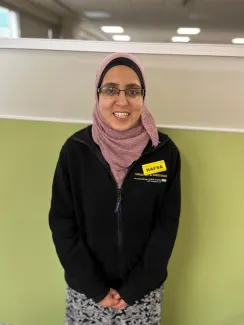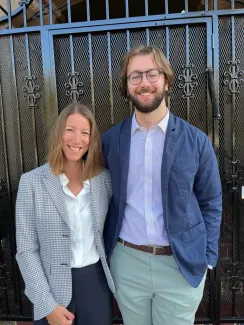Acute lymphoblastic leukaemia is the most common cancer in childhood, affecting over 600 children and young adults in the UK each year. Current treatments cure most children (around 90%), but this comes at a significant cost due to side effects including heart disease, reduced bone density, obesity, and fertility problems. The outlook for children whose leukaemia returns (around 70 to 90 a year) remains poor.
Regulatory regions of our genetic code, or DNA, are responsible for interacting with genes and switching them on and off. In healthy cells, regulatory regions carefully control important genes at the correct time to allow cells to do their job. Some patients with leukaemia have errors in their DNA that lead to these regulatory regions moving to a different location in the genetic code and switching on the wrong gene.
My research
I’ve spent 20 years discovering relocated regulatory regions that occur in the genomes of patients with a type of leukaemia that affects a white blood cell called a B-cell. This work has led to changes in the treatment that patients with leukaemia receive. Since these regulatory regions also change locations in patients with leukaemia affecting another type of white blood cell, called a T-cell, I’m now working closely with Dr van Delft, a clinical scientist with expertise in T-cell leukaemia. Together, we’re currently investigating how these regulatory regions and the genes they switch on are communicating with each other, which will be key to developing new therapies targeting their interaction in cancer cells.
With the goal being to switch off our genes of interest, the team needs to shut down the regulatory regions. To do this, Camille Drai, a research technician in my team, has made a virus that will infect the leukaemia cells and deliver gene-editing proteins. Once Camille has everything inside the leukaemia cells, she can switch on the gene-editing proteins and observe any changes in the cells.
This process has taken over a year. More recently, Camille has been checking that the gene-editing proteins are working properly inside the cells, and she's been making sure that the gene-editing proteins will only make changes to our regulatory regions of interest. The exciting news is that Camille is now ready to switch the system on!
If we’re successful in breaking the communication between the regulatory region and the gene it’s switching on, we hope that the cells will grow more slowly and maybe even die. The next steps involve Camille checking if the cancer-causing gene is switched off. She’ll need to monitor the health of the cells and also look deeper into how breaking this communication affects the leukaemia cell.
What will this work lead to?
The new knowledge we gain from this work will provide opportunities to develop new ways of killing leukaemia cells. By targeting the change in the genetic code itself, we hope that future treatment options will be kinder, with fewer long-term effects on the health of children and young adults as they get older.
With thanks to Rachel Saul, Emma Jones, Tabitha Fuller, Jon Waite, Kim Hodkinson, Tyler Hodkinson and Emily Saul of our Public and Patient Advisory Group who have contributed to writing this article.
From Contact magazine issue 106 | Spring 2025




